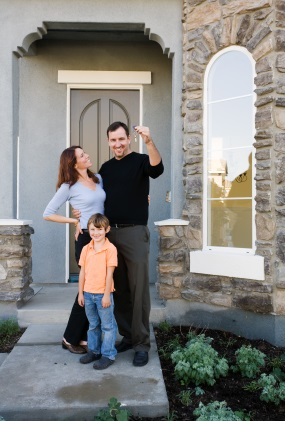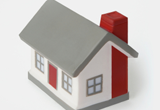Homeowners Still Losing Equity on Their Homes Across the Nation
By Kyle Chezum Updated on 6/10/2011
Ten years ago, the average homeowner had 61% equity in his or her home. The remainder was on bank balance sheets. That's impressive, when you consider it. Assuming a bell curve distribution, this means that a large number of Americans owned their homes outright and that many others had enough capital stored away in their homes to significantly benefit their financial situations. Those who had mortgages were gradually working to pay them down and were building up meaningful equity in the process.
Today, the average homeowner has just 38% equity in his or her home. This isn't just a drop. It's a dramatic drop that speaks to the massive decline in home values and the surge of new, recent mortgage holders into the market during the final years of the housing bubble. These borrowers, who never got the opportunity to build up significant equity before hard times hit, are often underwater along with many other homeowners.
Home prices in many large metropolitan areas have fluctuated upward and downward during the crisis, though with the exception of one or two areas, they have mostly trended downward. Home prices in most of these areas have now returned to 2002 levels. What does this say about the equity of the homes in these cities? It says that anyone who bought during the peak bubble years likely has little to no equity at all in his or her home. All the equity appreciation of the last 9 years has been undone.
Mortgage rates have reached extreme lows again of less than 4.5% for a 30 year fixed rate loan, Freddie Mac reports, but this hasn't yet stirred the housing sector into action. With summer on the way, though, there could be a beneficial change in the real estate forecast.

Didn't find the answer you wanted? Ask one of your own.
-
 What You Need To Know About Escrow
View More
What You Need To Know About Escrow
View More
-
 President Obama Initiates Lower FHA Mortgage Insurance Premiums
View More
President Obama Initiates Lower FHA Mortgage Insurance Premiums
View More
-
 What is Quantitative Easing?
View More
What is Quantitative Easing?
View More
-
 The 5 New Mortgage and Housing Trends for Summer 2013
View More
The 5 New Mortgage and Housing Trends for Summer 2013
View More
-
 Fannie Mae profitability skyrockets
View More
Fannie Mae profitability skyrockets
View More
-
 Foreclosure protections for more soldiers after lawmakers draft bill
View More
Foreclosure protections for more soldiers after lawmakers draft bill
View More
-
 FHFA: HARP success follows low mortgage rates, February refinance volume strong
View More
FHFA: HARP success follows low mortgage rates, February refinance volume strong
View More
-
 Use of Mortgage Interest Deduction Depends on Where You Live
View More
Use of Mortgage Interest Deduction Depends on Where You Live
View More
-
 HUD will sell 40,000 distressed loans in 2013
View More
HUD will sell 40,000 distressed loans in 2013
View More
-
 Mortgage Principal Reduction Could Save Taxpayers $2.8 Billion
View More
Mortgage Principal Reduction Could Save Taxpayers $2.8 Billion
View More
-
 Mortgage Applications Regain Traction after Sluggishness, Rates Continue to Fall
View More
Mortgage Applications Regain Traction after Sluggishness, Rates Continue to Fall
View More
-
 HARP 3.0 Discussions Reveal Little Hope for HARP Update
View More
HARP 3.0 Discussions Reveal Little Hope for HARP Update
View More
-
 Home Prices Rise in February According to LPS Data
View More
Home Prices Rise in February According to LPS Data
View More
-
 Balancing Act: House Committee Hears Opposing Viewpoints Over Mortgage Interest Rate Deduction
View More
Balancing Act: House Committee Hears Opposing Viewpoints Over Mortgage Interest Rate Deduction
View More
-
 Near Record Low Mortgage Rates Buoy Housing Recovery
View More
Near Record Low Mortgage Rates Buoy Housing Recovery
View More
Related Articles
Ask our community a question.
Searching Today's Rates...

Featured Lenders
Lisa Stepp
RBS Citizens
Clifton Park, NY
Cameron Burke
Vision One Mortgage
Huntington Beach, CA
Kat Whitman
Whitman Met, Inc.
Sacramento, CA

